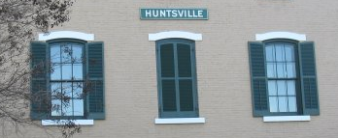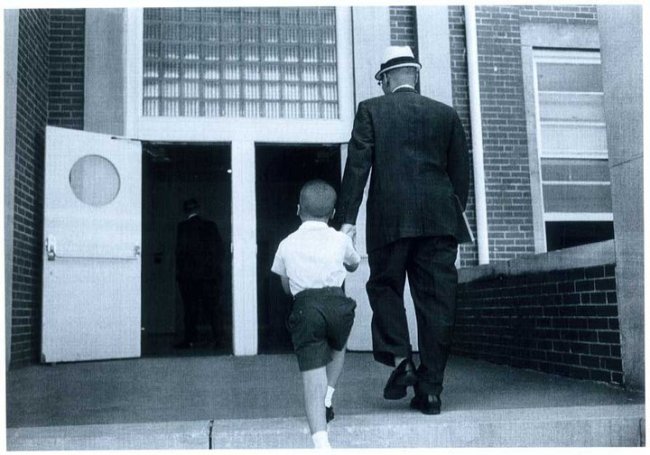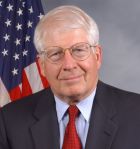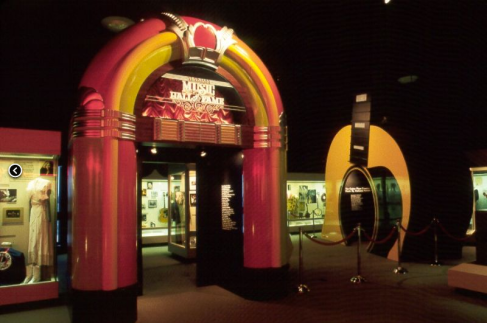
Photo via Alabama Music Hall of Fame.
It’s sometimes said all publicity is good publicity, so a New York Times story about the struggles of the Alabama Music Hall of Fame is probably a good thing for the beleaguered museum.
Alabama Museum, in Area Where Stars Found Sound, Seeks an Audience: Tourists
The story suggests the museum, with its long history of closings due to funding problems, might need to do some things differently to be successful in the future, including moving to another city.
As a reporter and editor at The TimesDaily in Florence, I covered the hall of fame before it had a building or displays and was raising funds through an annual all-star concert in Birmingham.
I heard and met an amazing lineup of musicians and music industry types on this beat, including members of the country band Alabama, Martha Reeves of Vandellas fame, Jim Nabors, David Hood and Jimmy Johnson of the Muscle Shoals Rhythm Section, blues legend Johnny Shines, Charlie Louvin, FAME Studios founder Rick Hall, bandleader Erskine Hawkins, the Commodores (minus Lionel Richie), Percy Sledge, Bobby Goldsboro, Jimmy Hall of Wet Willie and Marty Raybon of Shenandoah, Clarence Carter and more. One year’s show ended with a group of stars on stage for a spine-tingling rendition of “My Home’s in Alabama.”
(There were almost more people on stage as in the audience. The Birmingham News didn’t cover the event and the city didn’t support it particularly well.)
When the funds were raised, construction began in the late 1980s on a parcel of old cotton field off U.S. Highway 72 south of downtown Tuscumbia, one of the four cities that makes up the metro Shoals area of Alabama (Florence, Sheffield, Tuscumbia and Muscle Shoals). The Shoals became home to the hall primarily because it was the general area where famous musicians had come to record at several recording studios, most prominently FAME and Muscle Shoals Sound. Also, the powers behind the hall of fame were mostly Shoals-area people with connections to the music industry.
The precise location, though, was a head-scratcher. It’s on a stretch of 4-lane highway that isn’t a main artery between any major points and is used manly by locals who live outside Tuscumbia or are driving from Northwest Alabama to Corinth, Mississippi or maybe Memphis, Tennessee. The four cities’ metro population is about 200,000 and as you’d expect have several highly trafficked although smallish downtowns and newer, car-oriented commercial areas. For some reason, though, the hall was built just outside the metro area, on the opposite side the fairly busy Huntsville-to-Florence corridor.
When I lived in the area, the hall was surrounded by what would have been pretty countryside if it weren’t for the uneven distribution of over-lit gas stations, fast-food restaurants, billboards and newish churches with huge, paved parking lots.
In the late 1980s Tuscumbia itself was a dusty little town that could have been the location of a movie set during the Great Depression just by changing out the cars on the street. Over time, though, while the U.S. 72 site of the hall of fame gained new fast-food neighbors downtown Tuscumbia came back to life through the generous investments of a local millionaire, making the hall’s isolated location look even more ill-conceived and short sighted.
The Times reports the current debate about the hall centers on whether it should move to Huntsville, Birmingham or Montgomery with the argument being those cities have the critical mass that could keep the museum busy vs. those who’d prefer to keep it close to the music culture and history of the Shoals.
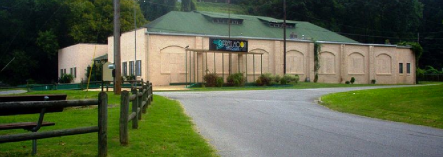
The second Muscle ShoalsSound Studios. The front, at left, overlooks a scenic stretch of the Tennessee River. (Photo via Wikimedia Commons.)
I lean toward keeping it in the Shoals, but not at its present location, which never made much sense and has failed to draw crowds. This is easier said than done since the warehouse-like building is constructed around the band Alabama’s tour bus, among other built-in exhibits.
The downtowns of one of the Shoals cities or even a well-traveled commercial strip would be an improvement over the hall’s current location. If the reason for having it in the Shoals is because this is the state’s musical heart, then it would make sense to connect it to that music culture and heritage. Where it is now, it might as well be in Huntsville or Birmingham or Montgomery. It just sits by the highway, isolated and unconnected to much of anything.
Moving it near Muscle Shoals Sound Studios would connect it to that history, give the attraction added dimension and give people more incentive to visit. I was initially thinking of the second facility, located at 1000 Alabama Ave. in Sheffield — a beautiful spot on the Tennessee River — certainly an aesthetic improvement over the current location with the river offering an added attraction. When I worked in the area, the studio was still in use but has since closed, with some of its recording equipment sold.
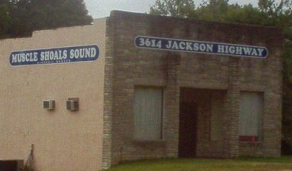
The more iconic Muscle Shoals Sound Studio building in Sheffield.
Another option might be the more famous and somewhat iconic original Muscle Shoals Sound Studios at 3614 Jackson Highway in Sheffield. It’s been purchased by a foundation for redevelopment. Either site could feature, in addition to museum exhibits, opportunities for visitors to watch actual recording, which would give the hall an extra dimension, coupled with the thrill of knowing these were places where actual stars like The Rolling Stones, The Black Keys, Lynyrd Skynyrd, Bob Dylan, Willie Nelson, Percy Sledge, Art Garfunkel, Bob Dylan, Bob Seger, Cher and many others, recorded.
Stuck in a boxy building outside an already remote small town, the hall of fame is the definition of out of sight, out of mind. By connecting it to the rich Muscle Shoals-area music tradition, the place could be truly unique, be about much more than just Alabama music, and be a destination for music lovers of all kinds.






